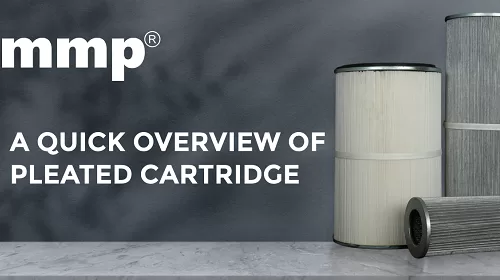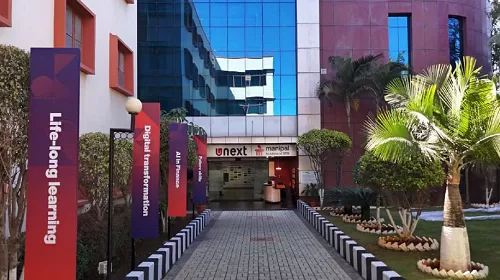By Ms. Janshi.G, Murugappa organo water solutions private limited
Water has been the backbone of evolution of life. Starting from mere existence to engineering achievement, the usage of water has been the catalyst.The water source decided the course of all the civilizations. It boosted the economy and trade. Along with improvising the standards of living, the anthropogenic water application equally resulted in the exploitation of the hydrosphere. Agriculture led to formation of civilized colonies and the later era industrial revolution led to urbanization in selected regions. Thus, started the challenge of water & wastewater management. Water due its chemical nature can dissolve a large range pollutants. The direct human generated waste was categorized as sewage and the other contaminated water was generally termed as wastewater. As the human activities increased, the need the use of fresh water increased, resulting in raise in generation of contaminated wastewater. With developing countries like India working hard to boost the economies, the demand for fresh water will increase rapidly.Based on the quality and demand, over the last decade there is a huge focus on various technologies to retrieve pollutant free water from all sources. In India as fore casted by the ministry, the water demand shall be 1180 billion cubic meters by 2050 from the existing usage of 750 billion cubic meter.
(1) Strikingly the supply of fresh water cannot be completely under the human governance. Unlike the past where the abundance of water decided the growth, in present conditions the efficient water management will decide the growth of the nation. Globally 72% of all water withdrawals are used by agriculture, 16% by municipalities for households and services, and 12% by industries. (2). There can be variation based on the country’s main economic activity strlike India being an agricultural country, almost 91% of water is used by the irrigational sector, followed by Industrial & domestic use. Though the industrial share of usage is 2% of total water demand, the water usage efficiency in Indian industries is far beyond the global standards.(1)
Striking the balance
With the widening supply to demand gap, the cost of raw water in arid semi-arid zones are reaching new heights over the years. Water is emerging as one of most influential commodities. Global & national governing bodies are declaring new targets of water use efficiency (WUE) in agricultural, industrial, and municipal uses. National water mission, India has set up the goal raising the WUE to 20%, which is still less than the global average. Though all these measures appear to strike only one side of the balance- the management of fresh water, there is the major insight of water reuse and recycle. Managing to save the depleting source of fresh water, the necessity for the search of sustainable water management has also evolved. The Indian water governance body, Jal sakthi aims to meet a considerable amount of urban water needs through reuse and recycling. The Industrial sector is also regularized on water reuse, recycle under Goal of Zero liquid discharge.
Sustainable reuse
When it comes to benefiting out of fresh water, the complexity of treating is less as it is considerably purer than the generated used water. Converting the wastewater (Sewage, industrial effluent) up to the standards of reuse, equivalent to the standards of fresh water is the challenge for the Industry. Thanks to the technological advancements, where there is a focussed treatment, removal process aiming at different micro level pollutants based on their nature. Conventional treatment methods had held their guard when it comes to pollution mitigation. Whereas reuse demands advanced treatment technologies so that the recovered water meets the best of its quality, sometimes even exceeding the raw water. The advanced technologies are upgradations which have overcome the conventional limitations and thus they have set the new standards of reusable water. Physical unit operations, chemical & biochemical unit processes have always been the crux of wastewater treatment.
The Era of polymeric membranes With the invention of polymeric membranes, membrane seperation techniques have long been applied in process industries. Out of all Membrane
high recoveries and low power consumption (3). In 1962 when Loeb and Surirajan succeeded in a polymeric membrane fabrication methodology, the membranes with improved physiochemical structure, high strength and high recoveries were commercially available. These UF membranes were getting applied in wastewater treatment for solids separation and thus a full-fledged Membrane bioreactor was commercialized. The Biological treatment technologies had the limitation on maintaining the microbial population, since the sedimentation and recirculation was dependant on the settling nature of the biomass. The Membrane bio reactors came as boon to face this challenge. Changing the concept of settling to filtration, the biological system has better control on the microbial population because the retention of biomass is no more dependent on the settling characteristics of the consortium. The multiple benefits being more microbes can be accommodated without fear of bulking with higher recirculation rate and the predatory slow growers have enough sludge retention time for their effective action on the organics. Since the MLSS is subjected to membrane filtration, the quality of recovered water is far better than the conventional clarifiers making it for reuse directly
. Different waste waters require different treatment
Not all waste waters will require immense biological treatment since they would have lesser organic load. Interestingly we could find one such application, where the used water required a polishing treatment, and it could be used back in process. The sugar industry is known as of the most water intensive industry and generates effluents with high organic load. The industry was facing a deep-water crisis and was totally dependent on its ground water borewells. Depleting borewells had set us on search for opportunities to look for reuse options. Out of conventional outcomes, the condensate from the sugar processing unit was identified as renewable source. From the analysis, it could be concluded that it was a low – medium strength wastewater and required biological treatment but the residual organics to be removed effectively as the intended use was for boilerfdi The challenges of microbial contamination and Consistency of water quality had set the faintest hopes for the conventional filters to match the requirement.Ultrafiltration at a filtration range of 0.01 to 0.1μm was the best fit for microbial & residual colloidal contaminant removal. With Phase 1 upgradation, it was evident that Ultrafiltration would deliver consistent output quality, better than the earlier bore well water. The Bore well also had the limitations of silica, since the condensate is free of silica, the end user’s efforts for silica removal was also reduced By end of phase 1, the client was all set to let go 1 out of 4 of their borewells for fresh water and the wastewater discharge was reduced by 50%. The Volumetric reduction for silica treatment was rendering a savings of INR 25 per cubic meter of raw water treated. Thus,wastewater reuse and recovery were paving their way to achieve sustainable water management, as result of which, phase II expansion with Ultrafiltration had commenced & commissioned successfully. The other unit of the same industry at Bagalkot, Karnataka are adapting the same treatment structure to enhance their water reuse standards.
Conclusion: Global water sustainability goals (SDG 6) have been set with a broader objective of providing water and sanitation for all. Driving deep into this objective, when we need to revive around 733 million people who are under extreme water stress, renewable water sources and sustainable water management becomes the fundamental approach. Beyond the regulatory acts, the driving force should be how best can we use Figure 8: MOWS Ultra Klean UF train – Phase II condensate treatment, Sugar processing Unit, Nellikuppam, Tamilnadu. our water. While wastewater recycle and reuse are significantly cutting down the expenditure on freshwater usage, it is also reducing the impact on the surrounding environment. Each industry must relook on their water footprints and compare with the global averages. There is a constant drive to improve the sustainability index across all segments, thus there should be ceaseless watch for new technologies and adaptation of new practices which can improve the water footprint. Periodic water audits can be eye openers for a new source of used water which can be treated and reused with minimal technologies. As our search for water is exceeding our planetary boundaries, the responsibility of maintaining a better planet still lies with us. After all we can find, extract, treat,reuse, and replenish water but can never create the elixir.





